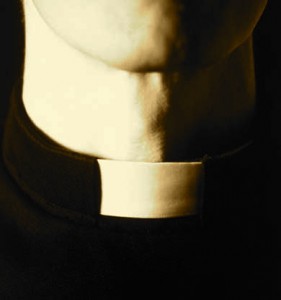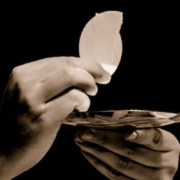 A new seminar I’m offering in this “Year of the Priest” in the Catholic Church is called “The Priesthood Explained: Understanding Father’s Priesthood – and Yours”. To whet your appetite, here’s an article I wrote on the subject for Catholic Insight magazine.
A new seminar I’m offering in this “Year of the Priest” in the Catholic Church is called “The Priesthood Explained: Understanding Father’s Priesthood – and Yours”. To whet your appetite, here’s an article I wrote on the subject for Catholic Insight magazine.
The Priesthood(s) Jesus Gave Us by Cale Clarke
A Catholic must, in the words of our first pope, “always be ready with an answer for anyone who asks you” (1 Peter 3:15) about the faith. And especially in this Year of the Priest, queries about the Catholic priesthood abound.
A fundamental question we are often asked is about the origin of the Catholic ministerial priesthood itself. Many doubt that Jesus meant to establish it. In fact, many see the priesthood as a later “invention” of the Church, a “Catholic accretion” to the gospel that must be done away with.
Speaking of 1 Peter, one major argument against the Catholic priesthood is found in 1 Peter 2:5, where all Christians are dubbed “a royal priesthood, a holy nation”. According to this text, the argument goes, since all believers are priests, a separate ministerial priesthood – the Catholic priesthood – is no longer necessary. We can return to the situation of Old Testament Israel, where all Israel was “a kingdom of priests” (Exodus 19:6). At the dawn of the Protestant revolution, Martin Luther made heavy use of the “priesthood of all believers” doctrine, as he understood it, to persuade people that they could in good conscience leave the Church of Rome.
This idea is only half true. All believers are, indeed priests. On this, the Catholic Church agrees with Peter, naturally! But that does not mean that we don’t need a separate ministerial priesthood – and, ironically, appealing to the case of Israel only strengthens the Catholic case.
As Fr. Mario Romero points out in his book Unabridged Christianity, the structure of Catholic priesthood in the New Covenant strikingly parallels that of the Old: there are three different types in each.
1. The High Priesthood. In the Old Covenant (cf. Lev. 16), The high priest was designated to enter the Holy of Holies in the Jerusalem temple and atone for the transgressions of the people on the Day of Atonement (Yom Kippur). In the New Covenant, Jesus Christ, our eternal High Priest, offers the one perfect sacrifice of himself in the true Holy of Holies (cf. Hebrews 7).
2. The Ordained, Ministerial Priesthood. Old Covenant Israel, of course, had the Levites as priests (Exodus 29 ff), who ministered on behalf of the other tribes. Some may say, “That was God’s response to the golden calf debacle, when only the Levites kept faith – prior to this, there was no unique priestly group. It is to this original state of Israel that God is calling us back to in the New Covenant”. This view fails to realize that, even prior to the establishment of the Levitical priesthood, there was already a separate priesthood (cf. Exodus 19:21,22).
The New Covenant also features an ordained, ministerial priesthood which ministers on behalf of God’s people. An oft-overlooked text that verifies this is Acts 1, when Matthias is chosen by lot to replace Judas in the apostolic band. Far from a game of chance, drawing lots is how priests were chosen for tasks in the temple (see Luke 1:9). Luke mentions this at the start of his second volume to link the new priesthood in the new temple (the Church) with the account of Zechariah’s Old Covenant priesthood in Luke 1.
Of course, there are also the stock texts one might turn to in support of a ministerial priesthood in the Church. In Romans 15:15-16, Saint Paul speaks of his “priestly service of the gospel”. The New Testament is replete with the ordinations of “presbyters” throughout – a Greek word that is translated into English as “priest” (eg. Acts 14:23, Titus 1:5).
3. The Universal Priesthood. This priesthood was shared by all Jews in the Old Covenant. It consisted of offering spiritual sacrifices to God. A similar universal, or “catholic” priesthood is conferred on all New Covenant believers at baptism, by which the believer shares in Christ’s threefold office of priest, prophet, and king (CCC 1268). All should offer the totality of their very lives (Romans 12:1) as their priestly offering to God – including their work and social lives, not simply their public and private worship. In both covenants, the ordained, ministerial priesthood is culled from the ranks of the universal priesthood.
This is the real “priesthood of all believers”. Contrary views must, sooner or later, be sacrificed on the altar of truth.



Leave a Reply
Want to join the discussion?Feel free to contribute!